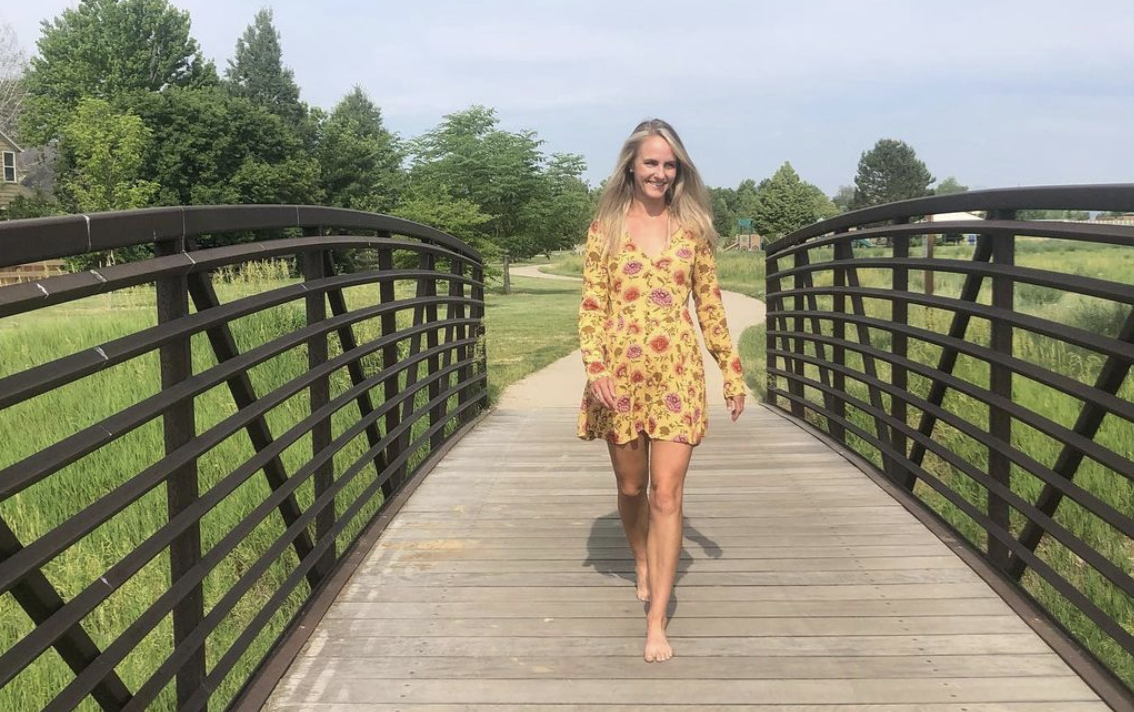EP|22 CARBS ARE not THE ENEMY
Live LOUD Life Podcast
Episode 22
CARBS ARE not THE ENEMY
Guest: Dana Eshelman RD
- Sports Nutrition
- Carbs are not the enemy, they are necessary for energy
- Fatigue = not enough carbs
- What are Macros Nutritients?
- Carbs
- Protein
- Fats
- Nutrition Periodization
- Cycle what you need based on when you are training and what you are doing
- MET- Metabolic Efficiency Training
- #1 problem she sees is people not enough enough carbs and in general not enough calories
- Highschool and collegiate athletes are deficient in protein and micronutrients (vitamins and minerals)
- Challenge…
- Every meal should have a Fat, Protein, and Fiber (carb) component!!
Check Out Some of Our Other Blog Posts and Podcast Episodes
EP|21 Why You Keep Yo Yoing Your Injuries
Live LOUD Life Podcast
Episode 21
Why You Keep Yo Yoing Your Injuries With Dr. Antonio Gurule
Guest & Host: Dr. Antonio Gurule DC
The back and forth recovery game is exhausting for everyone. Stop injuries and understand why you keep relapsing.
Connect With Antonio and the Live LOUD team:
Subscribe to my YouTube channel here: https://www.youtube.com/c/LiveLoud
Visit the website: http://www.lifeloudlife.com
Like the Facebook page: https://www.facebook.com/liveloudchiropractic/
Follow on Instagram: https://www.instagram.com/live.loud.life/
Guiding your to the adventurous life you were made for!
.
If you dig this give it a like ❤️, if you’re loving it let me hear you with a comment 🗣👂, and if you know it will help someone or anyone out please share 👥📲
About Dr. Antonio

Background:
-
Personal Trainer
-
Chiropractor
-
Founder of Live LOUD
Check Out Some of Our Other Blog Posts and Podcast Episodes
EP|20 YOU SHOULD not STOP DOING CROSSFIT
Live LOUD Life Podcast
Episode 20
YOU SHOULD not STOP DOING CROSSFIT
Guest & Host: Dr. Antonio Gurule DC
Connect With Antonio and the Live LOUD team:
Subscribe to my YouTube channel here: https://www.youtube.com/c/LiveLoud
Visit the website: http://www.lifeloudlife.com
Like the Facebook page: https://www.facebook.com/liveloudchiropractic/
Follow on Instagram: https://www.instagram.com/live.loud.life/
Guiding your to the adventurous life you were made for!
.
If you dig this give it a like ❤️, if you’re loving it let me hear you with a comment 🗣👂, and if you know it will help someone or anyone out please share 👥📲
About Dr. Antonio

Background:
-
Personal Trainer
-
Chiropractor
-
Founder of Live LOUD
Check Out Some of Our Other Blog Posts and Podcast Episodes
Podcast EP|19 Born to Run With Dr. Jesse Riley
Live LOUD Life Podcast
Episode 19
Born to Run
Guest: Jesse Riley DC
Topics of discussion:
- Common running injuries
- How cadence can help you recover
- Myths about running injuries
- Challenge: Run More
About Dr. Antonio

Background:
- Movement Coach
- Chiropractor
- Endurance Athlete Rehab Specialist
Where to follow:
Check Out Some of Our Other Blog Posts and Podcast Episodes
Full Body Movements Over Kegels To Target Pelvic Floor
Full Body Movements Over Kegels To Target Pelvic Floor
How can you strengthen the pelvic floor without kegels? People commonly resort to kegels to “stop the flow of urine.” However, that solution really only activates a small part of the pelvic floor, whereas we want the full pelvic bowl to be engaged.
I want you to think a little bit away from the dated mentality of isolation exercises. For example, at the gym when you see things like just quad machine, or the adductors, or just the presses. That’d be only doing calf raises if you want to strengthen your legs. You’d probably end up with really tight calves, but not necessarily strong quads or hamstrings, and then those calves would behave as weak calves. Another example is the bicep. If you rep bicep curls all day, the muscle will get really tight and short. That would not make it very functional because a tight muscle behaves like a weak muscle. It also will fatigue more. Whereas a muscle that does daily lifting and moving will be solid and much more functional.
The same is true for the pelvic floor. Maybe you’re pregnant or postpartum and you were told you need to do kegel exercises to strengthen your pelvic floor. There’s a chance you’ll end up with a pelvic floor that’s hypertonic, meaning it’s essentially too tight. Many women have too tight of a pelvic floor, which causes them to have a pelvic floor that is behaving like a weak pelvic floor. So when they go to do movements such as running, their pelvic floor is fatiguing because it’s been overworked—it’s too tight. We want to reduce that tension. We want to figure out how to relax the pelvic floor, but also get toned to that pelvic floor.
PLAY VIDEO ⬇︎
How to Strengthen the Pelvic floor Without Kegel Exercises
The best way to work toward getting strong, functional pelvic floor muscles is through full body movements. There are many alternatives to kegels. So exercises like squats, deadlifts, rows, and glute bridges. Do movements that activate and challenge the deep core. The pelvic floor is never entirely turned off. It’s a core muscle, so it’s always engaged to some extent, even with just our breath. When you go to sit and stand, your pelvic floor will be engaged whether you’re aware of it or not.
There’s something called the piston breath, where as you inhale, the diaphragm lowers and the pelvic floor is loaded. As you exhale, the diaphragm comes up and the pelvic floor comes up. So in the beginning, as you’re reconnecting, you can do a full body movement and use your breath to your advantage. Think: exhale, then engage on exertion. During the hard part of the movement, exhale, then intentionally engage the pelvic floor.
So for a squat, the easy part is coming down, the exertion part is coming up. Inhale going down, exhale, and engage that pelvic floor. As you engage your pelvic floor, your transverse abdominus will also automatically engage. So if you want, you can think about engaging that deep core together with the pelvic floor, then engaging that transverse. Another fully body movement is the deadlift. The hard part of a deadlift is coming out of the movement. Inhale down, exhale, engage pelvic floor on the rise.
Conclusion
This is what we can do early on for that connection: use the piston breath to our advantage to connect and really engage the deep core system. But long term, we should just be able to use these full body movements in an advantageous way for our deep core. Eventually, we shouldn’t even have to tell it to turn on. Ultimately, full body movements are the best way to really tune in to strengthen the pelvic floor. However, there are always exceptions where kegels can be advantageous to get people to isolate and really focus if they’re having a hard time. But we never want to overdo them because, again, we don’t want to create overly tight muscles that behave as weak muscles.
At the end of the day, don’t think “kegel exercises.” Think “pelvic floor muscle activation,” so that you think of all of those muscles coming in and joining together. When it comes to strengthening the pelvic floor, we really want to incorporate these full body movements.
Keep up the great work and LIVE LOUD!
Podcast EP|18 Nutrition Building Blocks Broken Down
Live LOUD Life Podcast
Episode 18
Nutrition Building Blocks Broken Down
Guest & Host: Dr. Antonio Gurule DC
Hey friends,
Connect With Antonio and the Live LOUD team:
Subscribe to my YouTube channel here: https://www.youtube.com/c/LiveLoud
Visit the website: http://www.lifeloudlife.com
Like the Facebook page: https://www.facebook.com/liveloudchiropractic/
Follow on Instagram: https://www.instagram.com/live.loud.life/
Guiding your to the adventurous life you were made for!
If you dig this give it a like ❤️, if you’re loving it let me hear you with a comment 🗣👂, and if you know it will help someone or anyone out please share 👥📲
About Dr. Antonio

Background:
-
Personal Trainer
-
Chiropractor
-
Founder of Live LOUD
Check Out Some of Our Other Blog Posts and Podcast Episodes
Rehab Purgatory & Why You Are Not Progressing
September 27, 2022
by Editor | Live Loud Life Podcast
0 Comments27 Minutes
When & How To Return To Running Postpartum
When & How to Start Running Postpartum
How long after birth can you start running?
What is your postpartum running plan?
What postpartum exercises can you start doing?
We have a problem in our society of women just going off and doing everything right away. They’re cleared at six weeks by their provider, whether it’s an OB or midwife that says, “everything looks healed, you can return to fitness and return to sex.” But as a women’s health therapist, I typically like women to wait 8 to 12 weeks if they have a plan. Just because you hit 8, 9,10,11,12 weeks, it doesn’t mean that you just go off for a three mile run.
The plan is: Have you worked on activating your deep core? Have you worked on pelvic stability? Core stability? Balance? If you have a plan, then starting to run 8 to 12 weeks will be a really great spot for you.
I’m Dr. Nichelle Gurule with Live Loud Chiropractic and coaching in Lafayette, Colorado. I specialize in prenatal, postpartum, and pediatric chiropractic care, along with prenatal and postpartum fitness and rehab. I’m one of many women’s health therapists in the Boulder County region, and while many are chiropractors, like myself, who have an emphasis in rehab, some are pelvic floor physical therapists as well. We all agree that women should wait a little bit longer before they begin to run again. Eight to 12 weeks is a much safer timeline than 6 weeks because we really want to make sure that the body is prepared for such a challenging sport.
PLAY VIDEO
Lots of Healing Is Done Within 6 Weeks, BUT…
Women are too often given the green light, when they really should be given the yellow light. Although a lot of healing has happened by 6 weeks, there’s still a lot more healing to do. In general, the pelvic floor and core needs more strength and endurance—it’s gone through a lot over the course of pregnancy. And a lot over the course of birth—whether it was a belly birth or vaginal birth. Women should be advised to still take it easy for a little bit longer, then gradually and progressively return to running.
The American College of Obstetrics and Gynecology (ACOG) agrees that we need a new paradigm for postpartum care. The first step is agreeance, but now it needs to be implemented. We want more appointments beyond the 6 weeks for check-ins. We want better referrals to women’s health therapists who are going to work on the core, help women return to fitness, and help with any other movements they want to do postpartum.
Running is a tough one, because runners often want to get back to it as soon as they’re able to. It’s very high impact, which means it’s going to put a lot of impact on that pelvic floor and the core in general. It requires a lot of pelvic stability, because it’s technically a single stance. So we need to work on single stance work. It requires a lot of core stability, balance, and endurance of all the core muscles. We want to have optimal posture. If we’re rounded over from feeding and holding our baby and have a curve of our back, it’s going to be difficult to breathe deeply. We want mobility and good posture for our mid back, so we can take a deep breath and get that oxygen so we’re not having cramps or other issues that result from not having good posture while we’re running.
Why Wait Until 8 to 12 Weeks to Run Again?
Why do we need to wait that long? Partially because this is a better healing timeline. You’ve healed so much more when you add another 2 to 6 weeks onto that 6 week clearance. It allows that initial fatigue of early motherhood to lessen—you’re likely a little bit more energized if you wait a little longer. The bleeding should be gone at this point after birth, and the hormones are starting to regulate a little bit more. It also gives you more time to build up that core and pelvic strength, as well as the muscle endurance of the pelvic floor.
What Symptoms Do We Want to Avoid When Starting to Run Again?
- Pressure/bulge/dragging in the vagina prior to or during commencement of running.
- Urinary and/or faecal incontinence prior to or during commencement of running.
- Ongoing or onset of vaginal bleeding, not related to menstrual cycle, during or after attempted low impact or high impact exercise (refer back to care provider).
- Musculoskeletal (MSK) pain e.g. pelvic pain prior to or during commencement of running.
Where Do We Start?
If you’re wanting to run postpartum, I highly recommend finding a women’s health therapist like myself, or a pelvic floor PT, to walk you through the steps so that you can be assessed the right way. There are specific running guidelines outlined in the Return to Running Guidelines:
In order to successfully complete this assessment, the postnatal mother needs to achieve the following without pain, heaviness, dragging or incontinence:
- Walking 30 minutes
- Single leg balance 10 seconds
- Single leg squat 10 repetitions each side
- Jog on the spot 1 minute
- Forward bounds 10 repetitions
- Hop in place 10 repetitions each leg
- Single leg running man
Strength Testing:
In order to ensure key muscle groups are prepared for running, each of the following movements should be performed with the number of repetitions counted to fatigue. Aim for 20 repetitions of each test.
- Single leg calf raise
- Single leg bridge
- Single leg sit to stand
- Side lying abduction
Those are just a few examples of some strength training and some challenges to that pelvic floor to see if you’re ready to start running. Because the body goes through a lot during pregnancy and has so many transitions, a lot happens to the core during birth.
What Do We Work On?
1. Breath
Your breathing will change substantially because the diaphragm gets locked up by the baby is taking up that space. And that diaphragm is fatigued after birth because it’s been worked so much that all the deep breathing that happens during birth. So we want to get that breath pattern back. A nice deep breath, a nice rib cage breath to make sure that you’re getting good oxygen is running.
2. Posture
3. Balance
Can you balance for 10 seconds? How about with your eyes closed? I like adding in the single-leg arc to see how your balance is with this movement. Is your pelvis up really high, or are your feet wobbling a lot, is your knee dipping in, are your toes gripping the ground? We want this balance movement to be nice and easy. And if it’s not, that’s okay, we’re going to work towards it.
4. Core Muscles
We want to be able to connect to our deep core. Can you easily tell your body to turn on your transverse abdominis—the deepest abdominal wall layer. Can you tell your body to activate the pelvic floor? What’s the endurance of that pelvic floor? Can you do 10 quick reps? Can you do 10 reps in a row of 6 to 8 second holds? Can you hold for 60 seconds at a minimal contraction of a 30 50% contraction? We want to rebuild that connection because the core is really paramount to running.
5. Mobility
We want to make sure that that the mid-back and hips are mobile. Try doing cat-cow exercises on the ground.
6. Stability
We really want to work on pelvic stability and strength because it plays a big huge in running. In order to have good stability, we want to strengthen the pelvis. You can take a band and work on lateral walks and squats. Try glute bridges, deadlifts—the list goes on.
7. Impact
There’s a lot of different things you can do to add impact to start preparing that pelvic floor for running, which is impact with every step. Consider trying lateral jumps so the pelvic floor gets used to it. You can start playing around with a few jumps on one leg, or go to a stair and jump off.
Conclusion
Check in with yourself: You got your breath down, you got your posture down, your balance is great, you reconnected to your core, you feel great with core stability, pelvic stability, and impact. Now it’s time to see what’s up for the run. To start, you shouldn’t just go out on a 3 mile run. Ideally, you’ll go out on a run for two minutes, walk for five, run for two, walk for five, etc. Then see, do you have any leaking? Do you have any heaviness or dragging? Any pain? Always check in with those symptoms.
To finalize the return to running postpartum, here are a final few tips: if you’re breastfeeding or producing milk, make sure that you pump before or feed your baby before. Also be sure to find a good bra that will support the new breasts that you have.
So how long after birth until you can run? The best answer is roughly 8 to 12 weeks if you have a good plan, and pay attention to the way you feel.
Keep up the great work and Live LOUD!
Podcast EP|17 Simple But Not Easy With Matt Berenc
Live LOUD Life Podcast
Episode 17
Simple But Not Easy
Guest: Matt Berenc
Check Out Some of Our Other Blog Posts and Podcast Episodes
Podcast EP|16 Healthy or Not Healthy With Sam Pogue
Live LOUD Life Podcast
Episode 16
Healthy or Not Healthy With Sam Pogue
Guest: Sam Pogue
- Fail Fast | Learn Slow
- Perspective comes at a cost
- Time
- Energy
- Money
- Pain
- Atomic Habits – James Clear
- Healthy or Not Healthy Choices
- Are you getting better?
- This should be the main focus of all of our endeavors
- Simplicity is the key to health and fitness
- Body Mapping
- Spend time understanding how your body feels and where it is in space
- Challenge – 5 min of body mapping a day
Check Out Some of Our Other Blog Posts and Podcast Episodes
How to Train & Reduce Pain When Traveling | EP 78
September 21, 2022
by Editor | Live Loud Life Podcast
0 Comments30 Minutes
Podcast EP|15 What Doctors Are Not Telling You About Your Chronic Pain
Live LOUD Life Podcast
Episode 15
What Doctors Are Not Telling You About Your Chronic Pain.
Guest & Host: Dr. Antonio Gurule DC
Connect With Antonio and the Live LOUD team:
Subscribe to my YouTube channel here: https://www.youtube.com/c/LiveLoud
Visit the website: http://www.lifeloudlife.com
Like the Facebook page: https://www.facebook.com/liveloudchiropractic/
Follow on Instagram: https://www.instagram.com/live.loud.life/
Guiding your to the adventurous life you were made for!
If you dig this give it a like ❤️, if you’re loving it let me hear you with a comment 🗣👂, and if you know it will help someone or anyone out please share 👥📲
Move Well
Antonio
About Dr. Antonio

Background:
-
Personal Trainer
-
Chiropractor
-
Founder of Live LOUD
Check Out Some of Our Other Blog Posts and Podcast Episodes
How to Audit Your Injuries EP|49
Podcast,Rehab & Pain/Injury Recovery
February 26, 2022
0 Comments29 Minutes






































